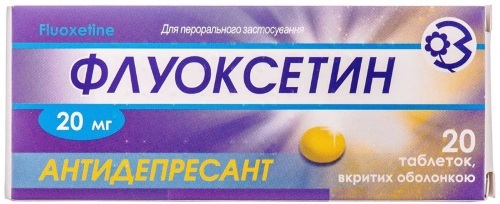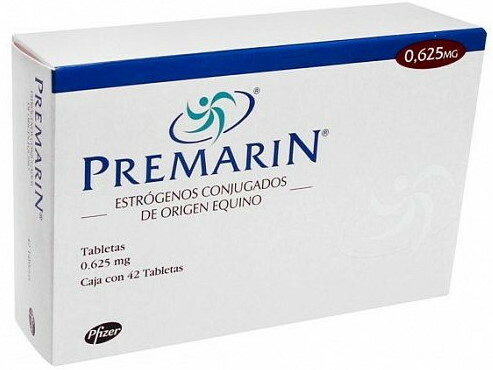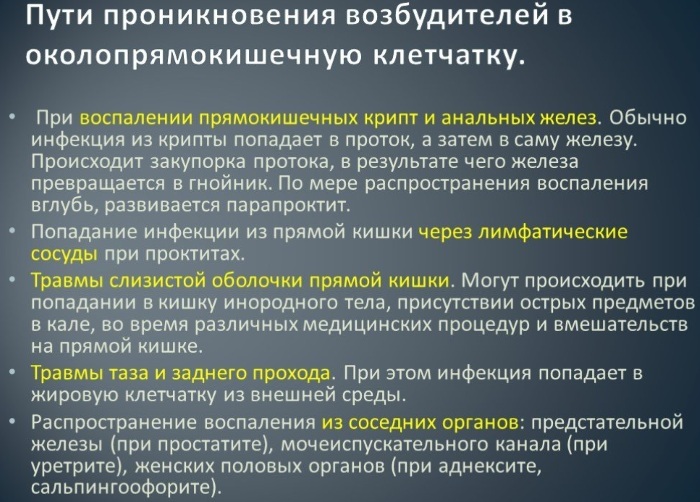Content
- What are hot flashes and how do they flow
- Causes of hot flashes in women over 50
- Climax
- Panic attacks
- Diabetes
- Thyroid pathology
- Postcastration syndrome
- Carcinoid syndrome
- Other rare causes
- Diagnostics and differentiation of diagnosis
- Treatment
- Help during high tide
- Course conservative therapy
- Non-hormonal drugs
- Hormonal treatment
- Ways to help relieve menopause and hot flashes
- Nutrition and diet
- Smoking cessation and lifestyle
- Video about hot flashes with menopause
Causes of hot flashes in women are different, but one of the most common is hormonal changes during menopause. Symptoms can be short-lived or last for years. Appropriate treatment is prescribed by the doctor depending on the cause.
What are hot flashes and how do they flow
Hot flashes are a typical symptom of female menopause. About 3/4 of all women suffer from them at some point. Hot flashes come on suddenly, intensify, but pass quickly. Sometimes this happens once a day, but on other days the syndrome repeats up to 40 times.
Hot flashes in women (symptoms and treatment often depend on the age of the patient) become noticeable as quickly increasing heat, which begins in the chest area and rises to head. There is a subjective feeling of warmth, in some cases the face turns red. In addition, the heart rate increases, sweating increases. After a few minutes, the hot flash subsides. The evaporation of the resulting sweat causes tremors in the body.
Very often, the symptoms described above appear at night during menopause.
Causes of hot flashes in women over 50
In most cases, hot flashes are caused by hormonal imbalance, which leads to dysfunction of the hypothalamus. It is the part of the brain that is the highest regulatory center with vital functions.
Among other things, he controls:
- functions of the circulatory system;
- body temperature;
- hormonal balance.
The hypothalamus is very sensitive to a drop in the concentration of certain hormones in the blood, which creates an imbalance and the body temperature can no longer be regulated properly. Cooling of the body begins. All small vessels are now dilated, as it is through them that the most effective heat control takes place. The vasodilation leads to increased blood flow, which causes facial flushing and an increased feeling of warmth. To cool the heated skin, the body begins to sweat.
Hot flashes are considered a hallmark of the menopausal transition. But they also occur in women as a result of certain diseases that affect the process of thermoregulation. For example, carcinoid syndrome, which occurs as a result of an endocrine tumor. Hot flashes can also develop as a side effect of certain medications, sometimes with severe infections or cancers that are associated with fever or night sweats.
Climax
Hot flashes in women (symptoms and treatment are determined by a doctor), mood swings, and fatigue are symptoms that accompany menopause. By about age 50, hormonal changes begin in the body, but side effects such as hot flashes can occur even before menstruation has stopped. During this period, ovulation and menstruation are irregular due to a gradual decrease in the amount of the hormone estrogen and a decrease in the production of the hormone progesterone.
At the same time, menopause is not a disease, and with a healthy lifestyle or proper treatment, a woman can feel good.
Panic attacks
Severe anxiety attacks can occur after certain situations, but can occur for no apparent reason. During a panic attack, which usually lasts from 5 to 30 minutes, the person's brain senses some threat and brings the body to a high level of alertness. As a person tries to get more oxygen and cause rapid breathing, various hormones, such as adrenaline, spread throughout the body and cause an increased heart rate.
Panic attacks often include physical symptoms:
- heat or cold waves;
- dizziness;
- severe chest pain;
- tremors in the body;
- hyperhidrosis;
- cardiopalmus.
Diabetes
People with diabetes cannot make enough of the hormone insulin, or their cells are resistant to its effects. Insulin is responsible for maintaining blood glucose (sugar) levels. Consequently, a diabetic's blood sugar can easily become too high or too low.
Diabetes can also lead to long-term complications if blood sugar levels remain too high for a long time. These complications include damage to the blood vessels and nervous system. Nerve damage is one of the factors that can contribute to diabetic hot flashes.
To stay healthy, the body needs to maintain a constant temperature. This process is based on the detection by the nervous system of changes in the external environment.
If the nervous system detects a drop in temperature, it sends a message to the hypothalamus region of the brain. The hypothalamus then triggers a series of reactions that increase body temperature. Likewise, if the nervous system detects an increase in temperature, the hypothalamus should trigger a response to cool the body. This is mainly done by sending sweat messages to the skin.
Thyroid pathology
A butterfly-shaped gland in the front of the neck releases hormones into the bloodstream that keep important body systems functioning properly. Insufficient activity, or rather overactivity of the thyroid gland, affects body weight, fatigue, heart palpitations, and especially unpleasant hot flashes.
Postcastration syndrome
The condition manifests itself as a consequence of a sudden stop of ovarian function, after which there are neuropsychological, endocrine, vascular and vegetative disorders.
Castration in women is the removal of the ovaries by surgery or deep radiation therapy to the ovaries. Manipulations are carried out for women whose age has not yet reached the period of the menstrual pause. The surgical method of castration is practiced for various diagnoses, for example, in the case of ovarian cancer. The ovaries are also removed during surgery for cervical cancer, sometimes for breast cancer.
Radiation castration is carried out with the aim of suppressing the hormonal and reproductive function of the gonads. For this purpose, the ovaries in women are irradiated.
After removal of the ovaries, a woman develops certain hormonal disorders. The level of estrogen in the body is markedly reduced, which increases the secretion of gonadotropins. However, not all women have post-castration syndrome.
Among the most frequent vegetative-vascular symptoms should be noted hot flashes, manifested by sweating, palpitations. After castration, symptoms appear in about 2-4 weeks.
Carcinoid syndrome
Carcinoid syndrome is a set of symptoms that can occur in patients with carcinoid tumors (neuroendocrine tumors, often in the gastrointestinal tract or lungs). The syndrome occurs when carcinoid tumors overproduce substances such as serotonin, which circulate throughout the body.
When excess serotonin reaches the tissues of the gastrointestinal tract, lungs, or skin, it causes some of the symptoms of carcinoid syndrome:
- hot flashes;
- wheezing;
- diarrhea.
Other rare causes
Hot flashes in women (symptoms and treatment depend on age and general condition) can also occur due to allergies to foods such as wheat, oranges, or eggs. Researchers have found that caffeine generates heat in the body and increases heart rate.

Other causes of hot flashes:
- Consuming foods containing capsaicin (hot chili peppers).
- Hot weather or overheated environment.
- Infection (such as tuberculosis).
- Medicines (antiestrogens and some antihypertensive drugs).
- Intake of monosodium glutamate.
- Occult (hidden) cancer.
- Perimenopause.
The relative lack of estrogen during menstrual bleeding causes some women to feel hot. During ovulation, the body temperature rises due to the release of luteinizing hormone or gestagens (progesterone), which also affects the appearance of excess heat.
Stress can cause hot flashes without menopause, as hormone levels change in the body at this point.
During prolonged fasting, the body does not mobilize sufficient reserves to maintain a constant blood sugar level. In this case, mild hypoglycemia may occur, in which hot flashes occur.
Diagnostics and differentiation of diagnosis
A detailed doctor's interview is the basis for individual therapy. During the conversation, the doctor learns about the intensity, duration of hot flashes, is interested in others possible illnesses, medication or life events that caused the development symptom. Irregular periods can be a sign of menopause and therefore cause hot flashes.
During a physical exam, blood pressure is measured, samples of thyroid cells are taken, and the heart and lungs are checked for function. An examination by a gynecologist is prescribed.
To exclude such dangerous causes as heart disease or hormonal disorders, special tests are carried out:
- Blood tests (hormonal status).
- ECG for suspected heart disease.
- Thyroid scintigraphy.
- CT if cancer is suspected.
Treatment aimed at the disease is carried out after a comprehensive examination.
Treatment
Treatment for hot flashes in women depends primarily on the cause. Without finding a causal relationship, symptoms often cannot be permanently resolved. Therefore, you should consult your doctor if there are serious concomitant signs or there is no improvement after therapy.
Help during high tide
Hot flashes can often be controlled or mitigated by various measures.
Because of the little-known side effects of hormone replacement therapy, it is currently only prescribed in severe cases. As a first step, doctors recommend herbal treatments such as red clover or St. John's wort, and 2 cups of sage or nettle leaf tea a day.
According to natural medicine experts, certain plants (such as soy) can heal symptoms of menopause. A number of plant-based supplements can be found today that have estrogen-like properties called phytoestrogens.

It is important to check for the presence of vitamin D and calcium, the balanced levels of which can improve the quality of life during this period. If there is a deficiency, supplements are prescribed.
Cognitive Behavioral Therapy is goal-oriented and focuses on specific emotional issues such as panic attacks and anxiety. Attending sessions of a psychotherapist will help get rid of the syndrome.
Course conservative therapy
In case of high blood pressure, the doctor prescribes antihypertensive drugs. If the cause is a thyroid disorder, medications are used to counteract it. Taking medication can also cause hot flashes and sweating, in which case your doctor should change your medication.
Non-hormonal drugs
Non-hormonal treatments include dietary and lifestyle changes, herbal remedies, homeopathic remedies, and over-the-counter medications. If lifestyle changes aren't enough to improve symptoms, non-hormonal hot flush treatments may be appropriate.
| Medicines and other products | Side effects | Efficacy |
Drug therapy | ||
| Fluoxetine | Nausea, change in bowel habits, decreased libido, insomnia | Reduced hot flashes. |
| Neurotin | Fatigue, dizziness, nausea, disorientation, swelling, weight gain | More effective for women with insomnia. |
| Paxil | Nausea, change in bowel regime, decreased libido, dry mouth, weight gain (rare) | Effective for women with insomnia. And also a decrease in hot flashes after application was noticed. |
Herbal Supplements | ||
| Soy (plant estrogen) | Safe to eat | Reduces hot flashes. |
| Evening primrose oil | Nausea, diarrhea, headache | Helps reduce the syndrome. |
Although it is safe to take herbal supplements in moderation with food, consuming excessive amounts of soy and isoflavone supplements may be harmful to women with a history of estrogen-dependent cancers such as cancer breasts.
Hormonal treatment
Hot flashes in women whose symptoms and treatment have been identified during menopause are treated with hormone therapy. The goal of treatment during this period is to artificially increase the level of estrogen and progesterone. Hormone therapy is also effective in reducing vaginal dryness and bone loss.
Hormone treatments include pills, patches, rings, gels, or creams. The patches are most effective for women with heart risk factors, such as a family history of heart disease.
Medicines for the treatment of hot flashes:
- Estradiol;
- preparations containing conjugated estrogen (Hormoplex, Premarin Estrofeminal);

- selective estrogen receptor modulators;
- combined or synthetic hormones.
Hormone-based medications should be used in the lowest doses, for the shortest possible period of time.
There are risks associated with taking hormonal drugs, including an increased risk of heart attack, stroke, blood clots, breast cancer, gallbladder disease, and dementia. The risks depend on age and whether the woman has had a hysterectomy.
Some of the relatively mild side effects of hormone use include breast tenderness, spotting or overtime, cramps, or bloating.
Ways to help relieve menopause and hot flashes
Lifestyle changes should be made before considering medication. Doctors recommend that women make these changes at least 3 months before starting the medication.
If hot flashes keep you awake at night, keep your bedroom cool and try drinking a little cold water before bed.
Nutrition and diet
In order not to gain weight, you should choose your carbohydrates wisely. When estrogen levels drop, insulin levels rise, so carbohydrates are stored as fat stores faster than in younger years. Therefore, it is recommended to reduce your sugar intake and switch to a balanced diet with whole grain breads, fish, fruits and vegetables.
Plant-based diets rich in phytoestrogens may not compensate for the loss of hormones, but they are beneficial to some extent. They are found in abundance, for example, in soybeans, papaya and fenugreek. The phytoestrogens found in soybeans and tofu can relieve symptoms.
The following foods and ingredients have a positive effect on the metabolism:
- Omega-3 fatty acids. They are important for the brain and contribute to the healthy functioning of the heart, regulate the level of lipids in the blood.
- Garlic. It has a positive effect on the level of cholesterol and blood lipids.
- Herbs instead of salt. An excess of salt is harmful to the body, while herbs contain vitamins, minerals and secondary plant substances.
-
Olive oil. Vegetable fats raise good HDL levels and lower bad LDL cholesterol.

- Tomatoes. Contains lycopene, a radical scavenger that has anti-cancer properties.
Smoking cessation and lifestyle
In addition to all the natural remedies mentioned, even simple changes can significantly alleviate menopausal symptoms and significantly improve quality of life.
Hot flashes in women whose symptoms and treatment are determined by a doctor can be alleviated by making some lifestyle changes:
- Dress in layers that can be removed gradually at the start of the tide.
- Avoid alcohol, spicy foods, caffeine.
- Try to quit smoking not only because of the symptoms of menopause, but also for your overall health.
- Maintain a healthy weight. Overweight or obese women may experience more frequent and severe hot flashes.
- Practice self-soothing techniques such as yoga. Early research has shown that meditation, with mindfulness, yoga and tai chi, can reduce menopausal symptoms.
- Exercising daily will help keep your body looking young and reduce body fat, two factors that will directly help relieve hot flashes.
If the problem is associated with menopausal hot flashes, then the prognosis is very favorable: all symptoms usually disappear after the new hormonal situation levels off, that is, after about 3-5 years. In some exceptional cases, symptoms last a little longer and only then subside.
The duration of hot flashes without menopause is highly dependent on the cause. Most causes usually respond well to treatment. Hypoglycemia, allergies, or spicy foods are short-term triggers of the syndrome. If these situations are avoided, hot flashes will disappear within a short period of time. Stress can cause hot flashes in the short term, but also over a long period of time.
The prognosis of a decrease in hot flashes in women always depends on the prescribed therapy. Early detection of symptoms, correct diagnosis and treatment of the prevailing problem are critical.
Author: Belyaeva Anna
Video about hot flashes with menopause
Hot flashes with menopause:



